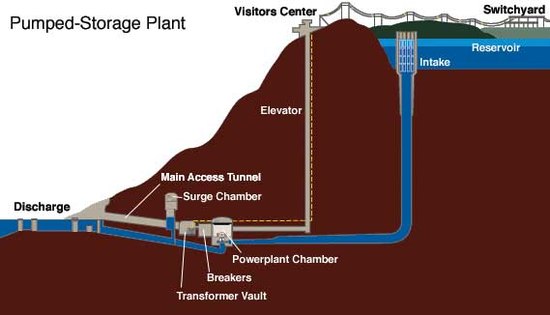Power Generation/Hydro Power/Part3
|
Pumped storage schemes are a convenient way of storing large quantities of energy which can be used during emergency or peaking times. Operation: During off-Peak hours, the plant draws electric energy from the electrical grid & uses that to pump water to the upper reservoir. When Peak time comes, the water from the upper reservoir is released & electric energy is generated in the lower reservoir. This cycle is repeated daily. By their nature, pumped storage schemes cannot be used as base load power stations. These are strictly used for peak time supply as they can be brought on-line quickly. Comparison:
| |||||||||
|
As evident from above table, both power stations are very desirable for use that goes outside of electrical energy generation confines. This schematic diagram must be properly understood. it is the basis upon which pumped-storage scheme power station designs are done. the individual power station complexity may differ slightly to the schematic and yet over and above that will use the same principle. | |||||||||

